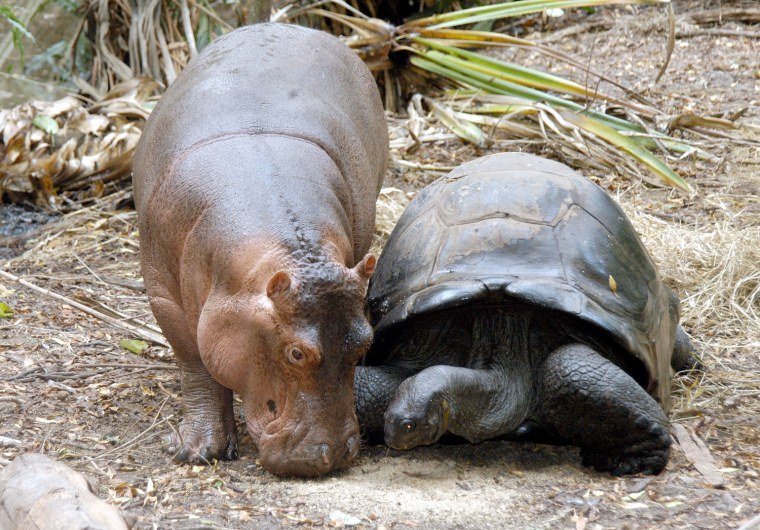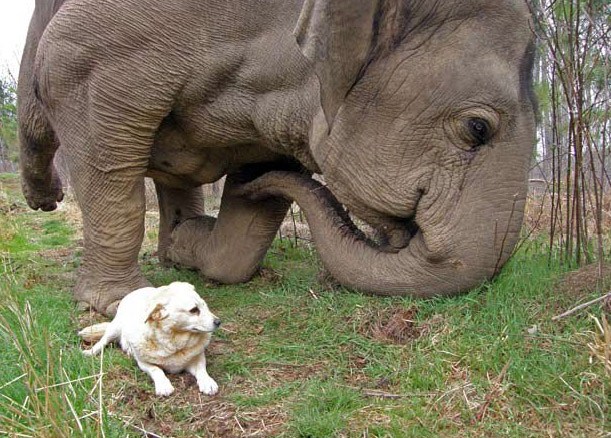Interspecies Friendships: Unlikely Bonds in the Animal Kingdom
Interspecies friendships are one of the most fascinating phenomena in the animal kingdom. These unlikely bonds not only challenge our understanding of animal behavior but also provide profound insights into the nature of friendship and empathy across species boundaries.
This article explores the scientific and emotional dimensions of interspecies friendships, highlighting remarkable examples and the underlying reasons for these extraordinary relationships.
The Science Behind Interspecies Friendships
 Understanding the science behind interspecies friendships requires delving into the evolutionary, biological, and psychological aspects that drive animals to form bonds with members of other species.
Understanding the science behind interspecies friendships requires delving into the evolutionary, biological, and psychological aspects that drive animals to form bonds with members of other species.
Evolutionary Perspectives
From an evolutionary standpoint, social bonds are primarily formed to enhance survival and reproductive success.
However, interspecies friendships seem to defy this principle as they often involve animals that are not directly related or beneficial to each other’s survival in the traditional sense.
Researchers suggest that these bonds may arise from mutualistic relationships where both species gain some benefit, such as protection, companionship, or enhanced foraging opportunities.
Biological and Neurological Factors
Studies have shown that certain biological and neurological factors can facilitate the formation of interspecies bonds. For instance, the release of oxytocin, often referred to as the "love hormone," plays a crucial role in bonding behaviors.
Oxytocin is known to enhance social interactions and has been observed in various animals during positive social encounters, not only within the same species but also between different species.
Behavioral Flexibility
Behavioral flexibility is another significant factor that contributes to interspecies friendships.
Animals with higher cognitive abilities, such as elephants, dolphins, and certain primates, are more likely to exhibit behaviors that promote cross-species bonding.
This flexibility allows them to adapt their social behaviors to interact with other species in a friendly and cooperative manner.
Remarkable Examples of Interspecies Friendships
Throughout the animal kingdom, there are numerous documented cases of interspecies friendships that highlight the diversity and depth of these bonds. Here are some of the most remarkable examples:
Koko the Gorilla and Her Kitten
 Koko, a gorilla known for her ability to communicate using sign language, formed a close bond with a kitten named All Ball. This relationship garnered significant attention as Koko exhibited nurturing behaviors typically reserved for her own species.
Koko, a gorilla known for her ability to communicate using sign language, formed a close bond with a kitten named All Ball. This relationship garnered significant attention as Koko exhibited nurturing behaviors typically reserved for her own species.
The bond between Koko and All Ball highlighted the emotional depth and capacity for empathy in gorillas.
Tarra the Elephant and Bella the Dog
 At the Elephant Sanctuary in Tennessee, Tarra, an elephant, formed an inseparable bond with Bella, a stray dog. Despite their size and species differences, Tarra and Bella spent their days together, playing and resting side by side.
At the Elephant Sanctuary in Tennessee, Tarra, an elephant, formed an inseparable bond with Bella, a stray dog. Despite their size and species differences, Tarra and Bella spent their days together, playing and resting side by side.
This friendship demonstrated the profound emotional connections that can form between vastly different species.
Mabel the Chicken and the Dogs
In a farm setting, a chicken named Mabel became best friends with two dogs, Paddy and Freddy. Instead of seeing the dogs as predators, Mabel integrated herself into their daily activities, often seen cuddling and playing with them. This bond challenged the typical predator-prey relationship and showcased the adaptability of animal friendships.
Owen the Hippo and Mzee the Tortoise
 One of the most famous examples of interspecies friendship is the bond between Owen, a baby hippo, and Mzee, a 130-year-old tortoise. After being separated from his herd by a tsunami, Owen was taken to a wildlife sanctuary where he met Mzee.
One of the most famous examples of interspecies friendship is the bond between Owen, a baby hippo, and Mzee, a 130-year-old tortoise. After being separated from his herd by a tsunami, Owen was taken to a wildlife sanctuary where he met Mzee.
The unlikely pair became inseparable, providing each other with companionship and comfort. Their story has been celebrated worldwide as a testament to the power of friendship.
Psychological and Emotional Dimensions
The psychological and emotional dimensions of interspecies friendships provide a deeper understanding of these bonds. These relationships often reflect complex emotional states and social behaviors.
Empathy and Altruism
Empathy and altruism are critical components of interspecies friendships. Animals in these relationships often exhibit behaviors that indicate a deep understanding and concern for the well-being of their friends.
This can include grooming, sharing food, and providing protection. These actions suggest that animals are capable of empathy and can form emotional bonds that transcend species boundaries.
Social Learning
Social learning plays a vital role in the formation and maintenance of interspecies friendships. Animals observe and imitate behaviors from their friends, leading to the adoption of new social skills and behaviors.
This learning process not only strengthens the bond between the animals but also enhances their ability to navigate social interactions within and outside their species.
Comfort and Companionship
At its core, interspecies friendships often provide comfort and companionship. Animals, like humans, seek out social connections to alleviate loneliness and stress.
These friendships offer a sense of security and emotional support, which is particularly evident in animals that have experienced trauma or loss.
Implications for Human-Animal Relationships
The study of interspecies friendships has significant implications for our understanding of human-animal relationships. These bonds can inform practices in animal care, conservation, and our general approach to interacting with animals.
Enhancing Animal Welfare
Recognizing the capacity for animals to form interspecies friendships can lead to improved animal welfare practices.
Providing opportunities for social interaction with other species can enhance the well-being of animals in captivity, such as in zoos and sanctuaries.
Understanding these dynamics allows caregivers to create environments that support the psychological and emotional needs of animals.
Conservation Efforts
Interspecies friendships can also play a role in conservation efforts. By fostering relationships between different species, conservationists can create more resilient ecosystems. For example, introducing animals that form mutualistic relationships can help maintain ecological balance and promote biodiversity.
Human-Pet Bonds
The insights gained from studying interspecies friendships can deepen our understanding of the bonds between humans and their pets.
Recognizing that animals are capable of complex emotional relationships encourages more compassionate and empathetic treatment of pets. It also highlights the importance of social interaction and companionship in their lives.
Conclusion
Interspecies friendships are a testament to the diversity and complexity of animal behavior. These unlikely bonds challenge our understanding of social interactions in the animal kingdom and reveal the profound capacity for empathy, altruism, and companionship among different species.
By studying and celebrating these relationships, we can enhance our approach to animal care, conservation, and our own interactions with the natural world. These friendships remind us of the shared emotional experiences that connect all living beings, transcending species boundaries and enriching our understanding of life itself.

































